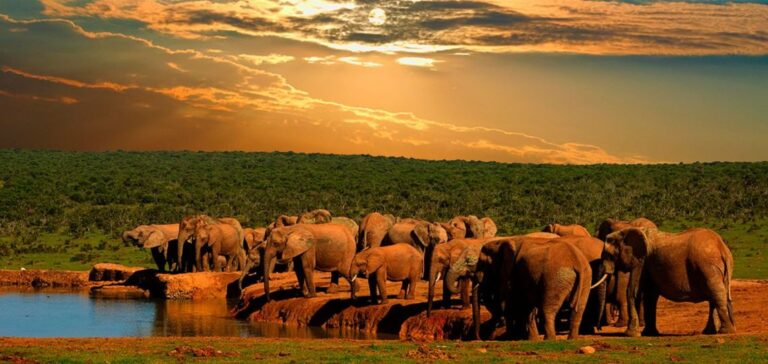A wind farm project near a nature reserve that is home to elephants in South Africa is causing concern among conservationists, who fear that the turbines could harm the pachyderms.
On the one hand, the Addo Elephant National Park in the south of the country is home to some 600 elephants. On the other, a project to build 200 wind turbines in a country in the midst of an energy crisis, desperately seeking ways to produce more electricity.
“It’s disastrous,” William Fowlds, a wildlife veterinarian who runs a lodge in the area, told AFP. He fears that wind turbines will destroy “the wildness of safaris”. “We are not against wind turbines, but if you locate them in an area of high environmental and eco-tourism value, you damage that environment and the lives of those who live there,” he castigates.
In a country plagued by regular power cuts, solar and wind power, which are still very under-exploited, represent serious alternatives. The continent’s leading industrial power, which still gets 80% of its electricity from coal, is unable to produce enough, mainly because of old and poorly maintained power plants.
The builders of the wind farms, including France’s EDF, have been given the green light by the Ministry of the Environment, which last year rejected a call to block everything. The department has assured that an environmental impact assessment has been conducted. Not enough to convince the project’s detractors, who said this week that they were considering new legal actions. One concern is that infrasound communication between large terrestrial mammals will be severely disrupted.
“There is a real risk that this will have an impact on their mode of communication” and their level of “stress”, warns with AFP Angela Stoeger-Horwath, a specialist in animal behavior at the University of Vienna. “Wind turbines make a lot of noise”. The elephants could become “aggressive”, says Jeni Smithies, a nature guide and wildlife photographer. Not to mention the degradation of the landscape, she says.
EDF already operates a wind farm about 10 km from the park. It “has been operational since 2015 and no complaints, problems or grievances have come up,” the group assured AFP, claiming to be watching over the biodiversity of the site.






















